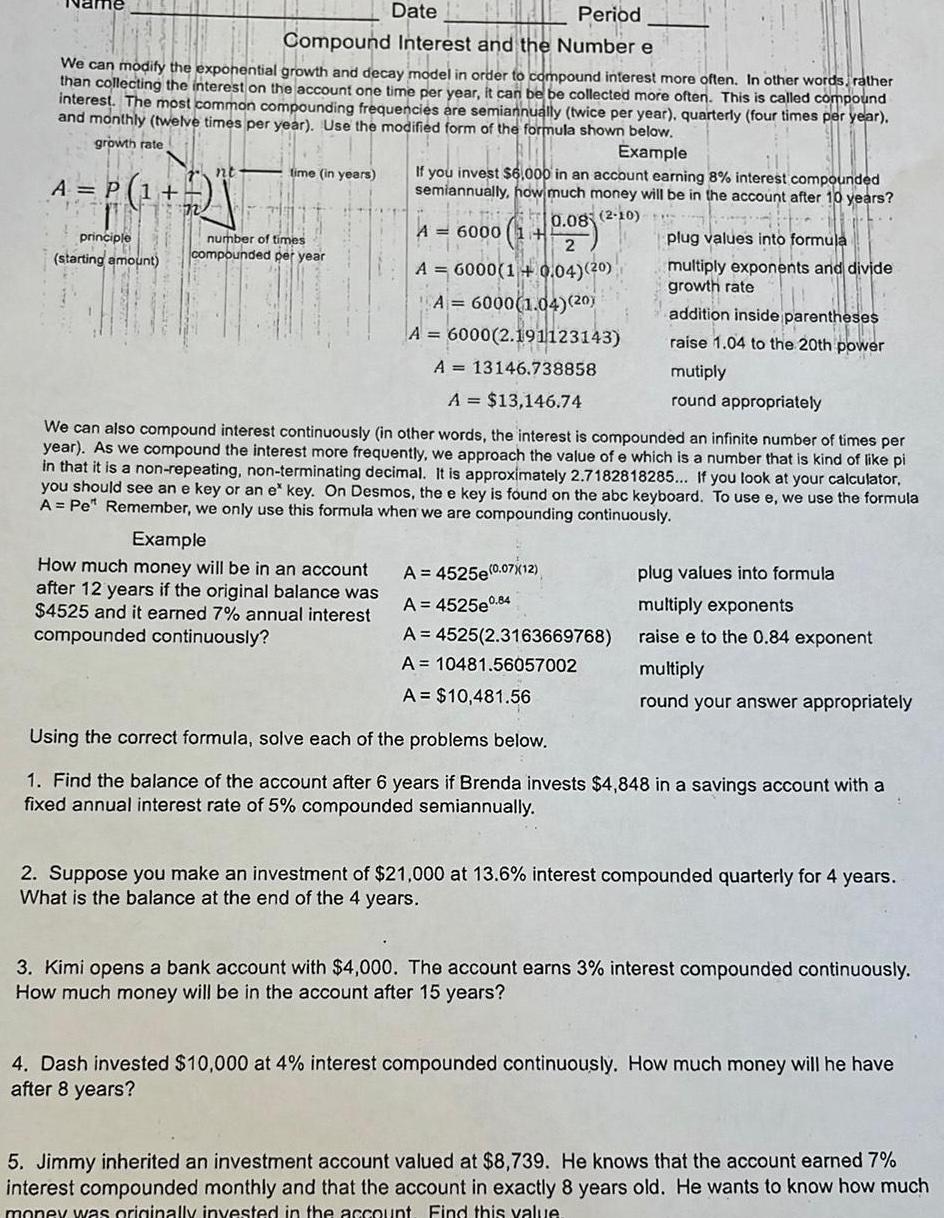Date Period Compound Interest and the Number e We can modify
Last updated: 2/9/2023

Date Period Compound Interest and the Number e We can modify the exponential growth and decay model in order to compound interest more often In other words rather than collecting the interest on the account one time per year it can be be collected more often This is called compound interest The most common compounding frequencies are semiannually twice per year quarterly four times per year and monthly twelve times per year Use the modified form of the formula shown below growth rate Example Name A P 1 1 10 21 principle starting amount nt time in years number of times compounded per year If you invest 6 000 in an account earning 8 interest compounded semiannually how much money will be in the account after 10 years 0 08 2 10 2 Example How much money will be in an account after 12 years if the original balance was 4525 and it earned 7 annual interest compounded continuously A 6000 A 6000 1 0 04 20 A 6000 1 04 20 A 6000 2 191123143 A 13146 738858 A 13 146 74 We can also compound interest continuously in other words the interest is compounded an infinite number of times per year As we compound the interest more frequently we approach the value of e which is a number that is kind of like pi in that it is a non repeating non terminating decimal It is approximately 2 7182818285 If you look at your calculator you should see an e key or an e key On Desmos the e key is found on the abc keyboard To use e we use the formula A Pet Remember we only use this formula when we are compounding continuously A 4525e 0 07 12 A 4525e0 84 A A 10481 56057002 A 10 481 56 11 plug values into formula 4525 2 3163669768 multiply exponents and divide growth rate addition inside parentheses raise 1 04 to the 20th power mutiply round appropriately plug values into formula multiply exponents raise e to the 0 84 exponent multiply round your answer appropriately Using the correct formula solve each of the problems below 1 Find the balance of the account after 6 years if Brenda invests 4 848 in a savings account with a fixed annual interest rate of 5 compounded semiannually 2 Suppose you make an investment of 21 000 at 13 6 interest compounded quarterly for 4 years What is the balance at the end of the 4 years 3 Kimi opens a bank account with 4 000 The account earns 3 interest compounded continuously How much money will be in the account after 15 years 4 Dash invested 10 000 at 4 interest compounded continuously How much money will he have after 8 years 5 Jimmy inherited an investment account valued at 8 739 He knows that the account earned 7 interest compounded monthly and that the account in exactly 8 years old He wants to know how much money was originally invested in the account Find this value